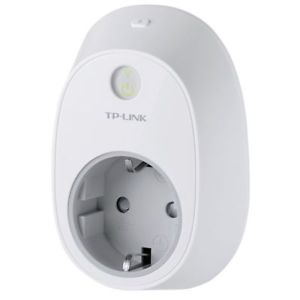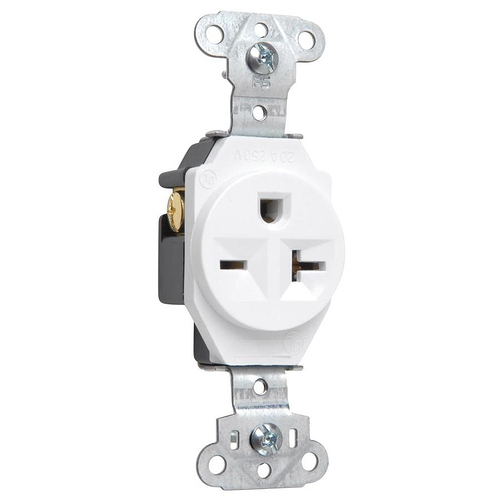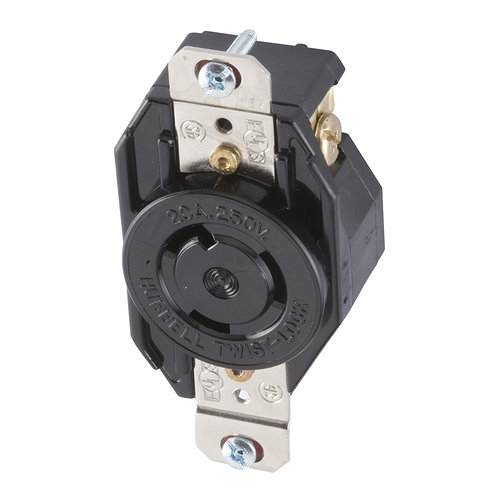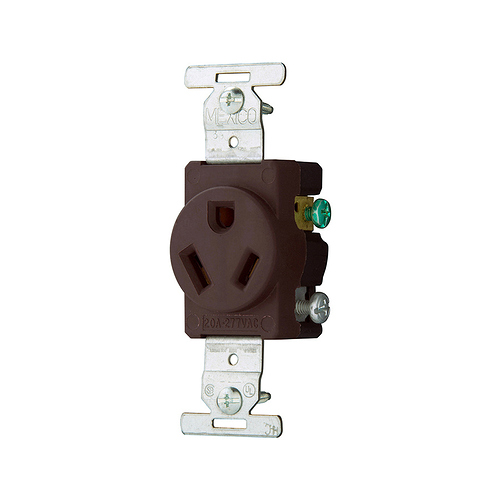So, how do you wire a 110v three prong device into a 220v circuit? My 220 v circuits have two hots (two phases I believe)m not one. What am I missing here?
I had to put an HS110 on my Samsung refrigerator as well since Sense never found it after 8+ months. I’m not happy that I have to keep spending more and more money to work around the unadvertised limitations of the Sense though.
Manually, and most likely not up to code, is how. I’m guessing the electronics can handle European voltages. So if you fudged together a way to physically make the connections, the device can handle a 16A 220V load. The two hots would run through the power prongs; the ground, though the ground pin.
Tim McBrayer
Our Maytag front loader was natively detected by Sense in the first few months. Given it’s a front loader with a weird signature I was fairly impressed with that.
You feed the two hots into the plug where the single hot and neutral would normally go. And you maintain a ground where it normally would be, on the ground prong.
If and how you choose to do this, and if it’s within code where you live, is entirely on you. I’m just giving you the info. I went to great lengths to make mine code using proper adapters, and since the devices themselves are indeed supported by TP-Link as supporting 240V, no issue there.
In short, I’m fairly confident that the actual hardware inside an HS110 is the same around the world in both 120V countries as well as 240V countries - the only bits that change are the plastic shell that provides the different plug styles.
Here’s the European version of the HS110 - look familliar?

AFIK, European power is 220 v single phase, so all the HS110 would need would be a single current sensor to accurately measure power. I’d think that for those with three phase systems here (lots of folks are not) would require a current transformer on both legs.
And that wiring would scare me. Any problem and voiding the electric codes would have devastating effects on insurance. I think I’ll wait for a suitable 208/220v solution (seems one of these companies would see that demand) for my “noisy”, but frequently running (power consuming), geothermal pump.
A similar 240V product for the US would likely be much more expensive, partially due to the panoply of 240V socketing we use here. I have 3 different adapters for feeding 240V to my Tesla and that doesn’t cover all the possible plug configurations. Different plugs for dryers vs. motor homes vs. arc welders, etc. You would probably only need one configuration, but the manufacturer would still need to cover most.
Good point. Too bad, because it appears that Sense really needs some detection (or at least monitoring) help and for most of us our largest consumers are 220 v, not 110. Looking back thru the detection thread, not many folks are worried about coffee pots and table lamps. Stoves, ovens, dryers, heaters, blowers, pumps, and EV chargers seem to dominate folk’s wish lists…for good reason.
What Sense could really use is a detector module that talks to Sense and installs into a 220 v line, probably mounted in a standard double junction box. That would eliminate the whole plug issue and would be code complaint for all those 220v circuits (pumps, blowers, large…like pool of Jacuzzi…heaters, etc). For things with plugs like your chargers, it could go in the line before the plug, thus avoiding that whole rat race. Given their skills, I’d think Sense could whip that up in a few hours and I’d bet many of us would buy a couple to get Sense providing the information we bought it for in the first place.
Hmmm, perhaps a patent? ((-
I hear you! I had to buy a $55 extension cord (2 foot long) to connect my EVSE (14-50 plug, 2 hot/neutral/ground) to my new house (6-50 plug, no neutral). And I could only do this because the EVSE doesn’t use the neutral at all.
Tim McBrayer
@oshawapilot You provided generic details on your HS110 adaption from 120vac to 240vac. What we really want to see is your detailed diagrams and some personal detailed photos.
I agree with @kevin1. In the USA we have every style of 240 V plug configuration that you can imagine. I don’t think you would ever want to measure an electric welder using this plug. Most consume more than 16-Amps of power. It would be nice if TP-Link would at least manufacture 1 or 2 models (240VAC) for the USA market so that the users do not have to modify the connection points and could purchase standard USA electrical parts.
The problem is that all USA 240-VAC plugs are rated for 20-amps or above. You can not purchase a 15 or 16-amp plug or receptacle as a standard electrical item. TP-Link would need to upgrade their HS-110 equipment to support a minimum of 20-amps. Then you could use standard USA plugs (like these shown below):
I’m going to politely decline to post personal photos of my setup.
As for rating vs consumption, that’s a fuzzy line. The 240V circuits feeding my 2 EVSE’s are on separate 20A breakers. I know for a fact that the loads max out at 16A (because that’s the maximum Gen1 Volts charge at) so I’ve no concern about overloading the HS110. 16A is also the maximum (per code) that a 20A circuit can carry for a “continuous load”, which is defined as “more than 3 hours”.
Both myself as well as others have also used temperature sensing hardware to observe the HS110’s temperature during a sustained 16A load and detected no significant build up.
Would it be theoretically possible for someone to plug in a >16A (but under the 20A the breaker is rated for) device? I suppose so. Someone could also plug in a 120V device and blow it up. But again, without going into details, I have taken both those scenarios into consideration as well so far as ensuring neither could ever happen.
In the end, it works for my application, but as I’ve acknowledged, since most 240V devices on this side of the pond are typically well in excess of 16A maximum, it’s of limited usefulness. I was just lucky that both of our EV’s only charge at 16A. My pool pump (which will also probably get an HS110 come spring) is also well under 16A too.
This topic was automatically closed 365 days after the last reply. New replies are no longer allowed.


